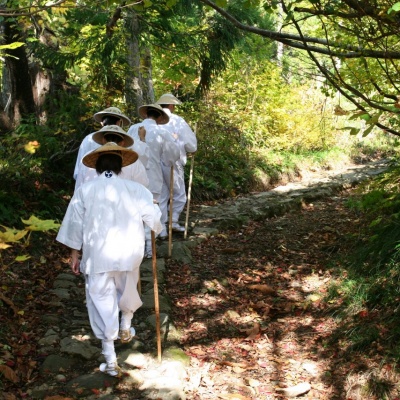3 days/2 nights based in Tsunagi Onsen [Base! Tohoku]
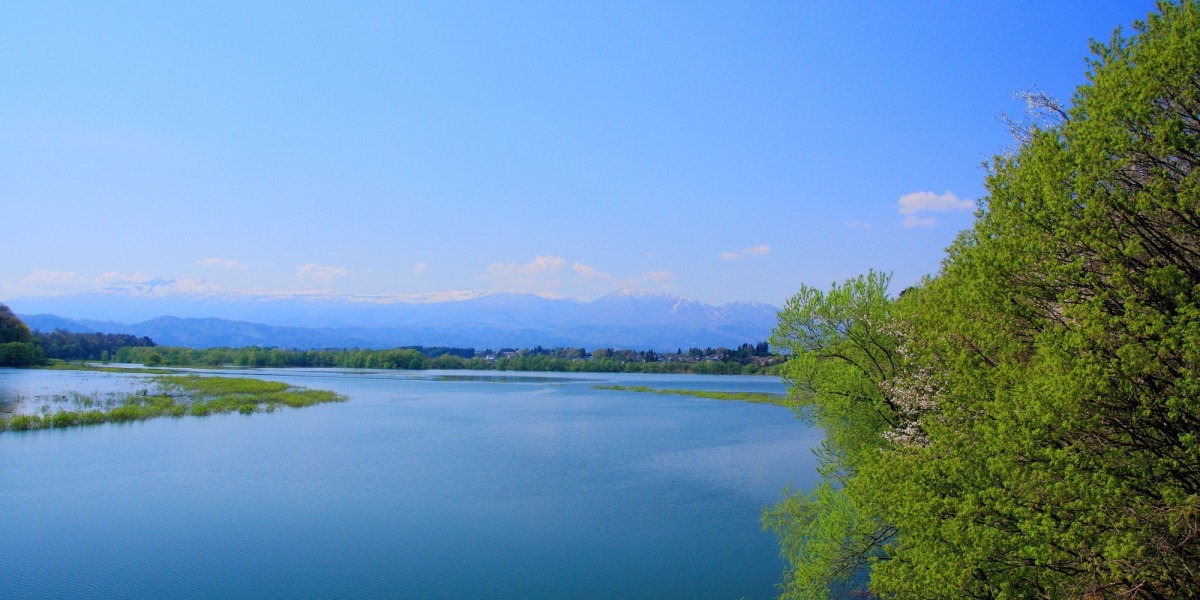
Tsunagi Onsen is located near Morioka Station, where the Shinkansen bullet train stops.
It is an ideal base for visiting famous sightseeing spots, but we also recommend spending time relaxing in the vast landscape.
START
Day1
Koiwai Farm
Recharge your batteries in this massive farmland backed by stunning views of Mount Iwate!
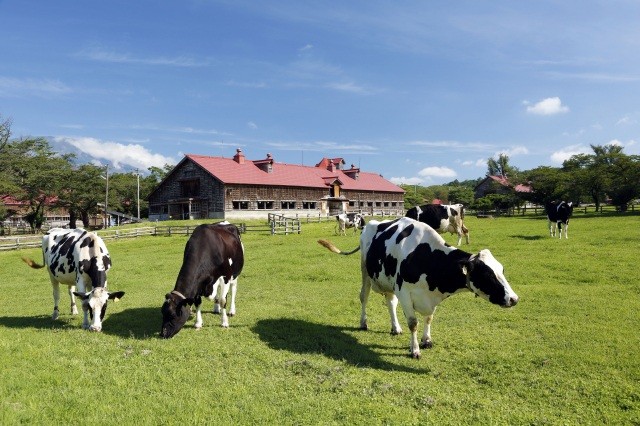
Koiwai Farm, one of the largest private integrated farms in Japan with a history of over 130 years since its establishment in 1891, has a total area of 3,000 hectares, part of which is open to the public as "Makibaen. Beyond the vast grassy plains, the majestic Mt.The farm also offers a variety of hands-on programs, including guided tours of the farm's forests, which are normally off-limits to the public.In addition, 21 buildings, including cowsheds and silos, designated as national important cultural properties, many of which are still in use today, can be viewed up close, including nine in the Kamimaru cowshed. The rest can be experienced at the Koiwai Farm Important Cultural Property Gallery, which makes full use of the latest digital technology in the park.
Food is also an important part of the Makibaen experience. Restaurants and snack stores offer dishes and sweets made with ingredients produced on the farm. Be sure to try the soft-serve ice cream made from raw milk from the Kamimaru Cowshed.
One of the largest illumination events in Tohoku is held during the winter season, offering a different view of the farm than during the daytime.
The farm is also famous for its lone cherry tree in full bloom against the backdrop of majestic Mt.
Food is also an important part of the Makibaen experience. Restaurants and snack stores offer dishes and sweets made with ingredients produced on the farm. Be sure to try the soft-serve ice cream made from raw milk from the Kamimaru Cowshed.
One of the largest illumination events in Tohoku is held during the winter season, offering a different view of the farm than during the daytime.
The farm is also famous for its lone cherry tree in full bloom against the backdrop of majestic Mt.
Morioka Handi-Works Square
See, touch, create, and experience the traditional way of making things!
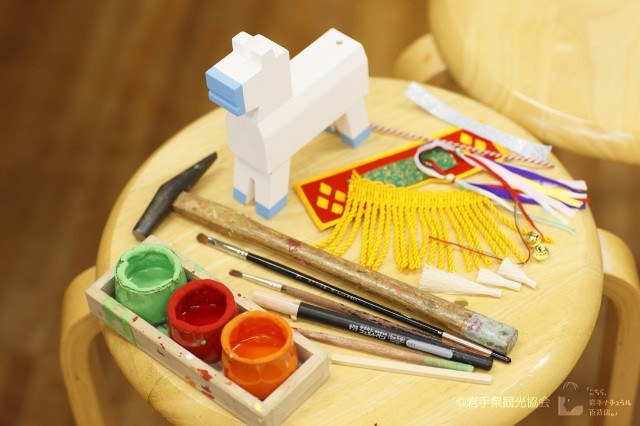
Morioka Handi-Works Square has three zones. In addition to the ""handmade workshop zone,'' which has 14 workshops for traditional techniques such as Morioka crafts, folk crafts, and food, there is the ""Morioka regional industrial promotion center zone,"" where more than 4,000 types of local products are exhibited and sold, and the ""Nanbu magariya zone,"" which is a unique relocated stable from the horse-producing area of the prefecture.
The handmade workshops are particularly popular, as you can see the traditional techniques of craftsmen up close, and you can also make your own original works with direct assistance from a craftsman. You can also try your hand at making Nanbu-senbei crackers and making cold noodles, which children and adults can both enjoy.
The Nanbu magariya is a unique stable to the horse-producing area built in the late Edo period, and is a treasure. The stable has agricultural tools that remind us of olden times on display, so you can feel like you have travelled back in time.
The handmade workshops are particularly popular, as you can see the traditional techniques of craftsmen up close, and you can also make your own original works with direct assistance from a craftsman. You can also try your hand at making Nanbu-senbei crackers and making cold noodles, which children and adults can both enjoy.
The Nanbu magariya is a unique stable to the horse-producing area built in the late Edo period, and is a treasure. The stable has agricultural tools that remind us of olden times on display, so you can feel like you have travelled back in time.
Tsunagi Onsen
A popular hot spring on the outskirts of Morioka, discovered by the famous warrior Minamoto no Yoshiie
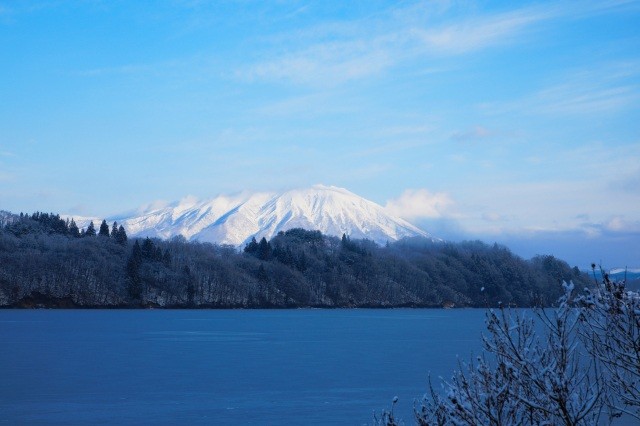
Tsunagi Onsen is located near Lake Gosho, a popular scenic location with views of Mount Iwaki and the impressive Tsunagi Bridge spanning the breadth of the lake.
With a history stretching back 900 years, Tsunagi Onsen is a popular hot spring on the outskirts of Morioka. The Onsen was named “Tsunagi” (tether) from when the famous samurai warrior Minamoto no Yoshiie took a bath while his horse was tied to a stone. The stone came to be known as Tsunagi Stone and can now be seen at the Tsunagi Onsen Shrine. The alkaline hot spring water is rich in metasilicic acid, a natural moisturiser, and is known to promote beautiful skin by removing waste products from the body and making the skin smooth.
Tsunagi Onsen is a 30-minute drive from Morioka station. Along with the nearby Koiwai Farm and Morioka Tezukuri Mura arts and crafts centre, the Onsen offers easy access to local attractions including Lake Towada, Mount Hachimantai, Kakunodate, Jodogahama Beach and Hiraizumi. The Onsen offers a wide range of hot spring inns suitable for all visitors and is the perfect location to stay while travelling around Northern Tohoku.
Visitors can enjoy the seasonal scenery of Lake Gosho with springtime cherry blossoms, verdant summer greens, vibrant autumn leaves and snowy winter scenes. The fireworks display over the lake during the summer festival is particularly spectacular.
With a history stretching back 900 years, Tsunagi Onsen is a popular hot spring on the outskirts of Morioka. The Onsen was named “Tsunagi” (tether) from when the famous samurai warrior Minamoto no Yoshiie took a bath while his horse was tied to a stone. The stone came to be known as Tsunagi Stone and can now be seen at the Tsunagi Onsen Shrine. The alkaline hot spring water is rich in metasilicic acid, a natural moisturiser, and is known to promote beautiful skin by removing waste products from the body and making the skin smooth.
Tsunagi Onsen is a 30-minute drive from Morioka station. Along with the nearby Koiwai Farm and Morioka Tezukuri Mura arts and crafts centre, the Onsen offers easy access to local attractions including Lake Towada, Mount Hachimantai, Kakunodate, Jodogahama Beach and Hiraizumi. The Onsen offers a wide range of hot spring inns suitable for all visitors and is the perfect location to stay while travelling around Northern Tohoku.
Visitors can enjoy the seasonal scenery of Lake Gosho with springtime cherry blossoms, verdant summer greens, vibrant autumn leaves and snowy winter scenes. The fireworks display over the lake during the summer festival is particularly spectacular.
Day2
Ryusendo Cave
Mysterious stalactites await you in a "dragon blue" underground lake!
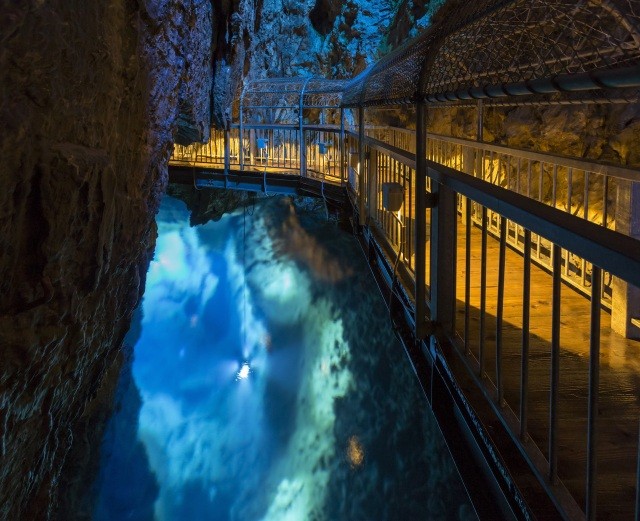
Ryusendo Cave is one of the three largest limestone caves in Japan and was designated as a national natural monument in 1938 as "Iwaizumi Yungkutsu and Bats.The total length of the caves, which are still being investigated, is estimated to be over 5,000 meters.The total length confirmed by the latest survey is over 4,088m, with a height difference of ±195m.About 700 m of the site is open to the public as a sightseeing course, with the highlights being the mysterious cave space that stretches in a straight line from the entrance and the underground lake with abundant clear water and a "dragon blue" glow.
Visitors can tour from the first underground lake, which was discovered during a survey in the 1930s, to the third underground lake, which boasts a maximum depth of 98 meters.The mineral-rich water from Ryusendo, nurtured by the surrounding forest area, is used as the water supply for the town of Iwaizumi and is also popular as a souvenir.
The Kikugashira bats, which live in Ryusendo, are often seen here, and five other bat species have been confirmed to inhabit the caves, including bats that visit the caves to overwinter.Do not touch them and observe them gently!
You can also enjoy the Ryusendo New Cave Science Museum, which is accessible with a common ticket with Ryusendo.This is a science museum using a natural cave with approximately 200 meters of limestone caves open to the public.Located right across from the entrance to Ryusendo, the museum features stalactites of various shapes nurtured in ancient strata.Ruins that are thought to date back to the early Jomon period have also been found, and earthenware, ornaments, shells, and other artifacts have been excavated.
Visitors can tour from the first underground lake, which was discovered during a survey in the 1930s, to the third underground lake, which boasts a maximum depth of 98 meters.The mineral-rich water from Ryusendo, nurtured by the surrounding forest area, is used as the water supply for the town of Iwaizumi and is also popular as a souvenir.
The Kikugashira bats, which live in Ryusendo, are often seen here, and five other bat species have been confirmed to inhabit the caves, including bats that visit the caves to overwinter.Do not touch them and observe them gently!
You can also enjoy the Ryusendo New Cave Science Museum, which is accessible with a common ticket with Ryusendo.This is a science museum using a natural cave with approximately 200 meters of limestone caves open to the public.Located right across from the entrance to Ryusendo, the museum features stalactites of various shapes nurtured in ancient strata.Ruins that are thought to date back to the early Jomon period have also been found, and earthenware, ornaments, shells, and other artifacts have been excavated.
Jodogahama Beach
This beautiful beach compared to Buddha’s Paradise was once visited by Kenji Miyazawa
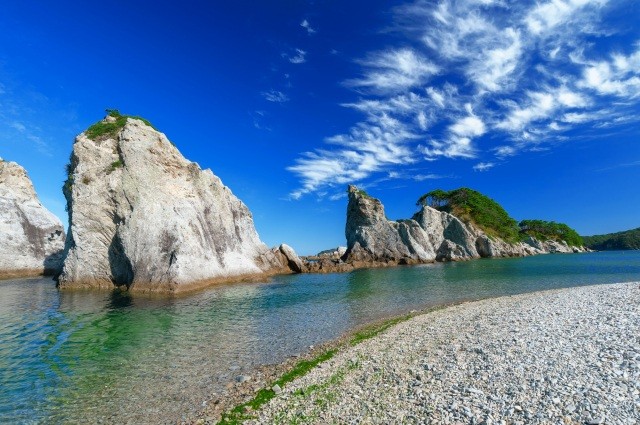
Jodogahama Beach in the Sanriku Geopark is located within the Sanriku Fukko National Park and is officially recognised as a place of scenic beauty. The beach sits on a peaceful inlet formed by volcanic white rocks and pebbles and contrasts beautifully with the surrounding green pine grove, reminding visitors of the beauty of traditional Japanese rock gardens. Legend has it that a Buddhist priest who once visited compared the beach’s beauty to Buddha’s Paradise giving rise to the name Jodogahama (Buddha’s Paradise Beach).
The calm beach is a popular bathing location during summer and is regularly listed as one of Japan’s best swimming locations.
Pleasure boat cruises are also available. Departing from Jodogahama, passengers have the chance to feed flocks of black-tailed gulls while enjoying the superb views of the national natural treasure Shiofuki-ana, the sheer cliffs of Anegasaki Cape and Hidejima Island.
Visitors can learn the history of the local area and its marine life at the nearby Jodogahama visitor centre and Iwate Marine Science Museum before heading along the walking trails to observation decks offering panoramic views of the beach and the Pacific Ocean. The Jodogahama Rest House is the perfect place for a break offering a range of local dishes and souvenirs with wonderful coastal views.
Boat tours to Hachinoheana, known as the Blue Cave, are available from the Jodogahama Marine House. The tour weaves through dynamic coastal landscapes before reaching the incredible blue waters within the cave. A morning tour is particularly recommended as this is when the emerald green of the ocean water is at its most impressive.
Kenji Miyazawa, a famous poet and writer of fairy tales, is among the well-known visitors to Jodogahama. Enjoy the stunning scenery of this beach long-compared to Buddha’s Paradise!
A thematic journey in the Tohoku region:Nature・Spectacles
The calm beach is a popular bathing location during summer and is regularly listed as one of Japan’s best swimming locations.
Pleasure boat cruises are also available. Departing from Jodogahama, passengers have the chance to feed flocks of black-tailed gulls while enjoying the superb views of the national natural treasure Shiofuki-ana, the sheer cliffs of Anegasaki Cape and Hidejima Island.
Visitors can learn the history of the local area and its marine life at the nearby Jodogahama visitor centre and Iwate Marine Science Museum before heading along the walking trails to observation decks offering panoramic views of the beach and the Pacific Ocean. The Jodogahama Rest House is the perfect place for a break offering a range of local dishes and souvenirs with wonderful coastal views.
Boat tours to Hachinoheana, known as the Blue Cave, are available from the Jodogahama Marine House. The tour weaves through dynamic coastal landscapes before reaching the incredible blue waters within the cave. A morning tour is particularly recommended as this is when the emerald green of the ocean water is at its most impressive.
Kenji Miyazawa, a famous poet and writer of fairy tales, is among the well-known visitors to Jodogahama. Enjoy the stunning scenery of this beach long-compared to Buddha’s Paradise!
A thematic journey in the Tohoku region:Nature・Spectacles
Sanriku Railway
Enjoy the magnificent sea of Sanriku: The "third sector" railroad bridging the Sanriku coast
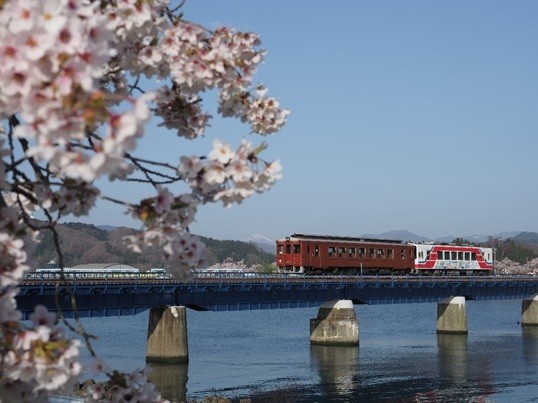
The Sanriku Railway Rias Line is the longest third-sector railroad line in Japan. It was created as a result of the restoration of the JR Yamada Line between Miyako and Kamaishi which was damaged in the Great East Japan Earthquake, along with a change of management. In addition to offering a spectacular view of the Sanriku coast from the train windows, the line operates special trains, including retro trains, tatami trains, kotatsu (heated table) trains, and trains where passengers can learn about the Tohoku earthquake of 2011.
★Information on special trainshttps://www.sanrikutetsudou.com/wp-content/themes/responsive/event.html
★Earthquake Disaster Trainhttps://www.sanrikutetsudou.com/?p=23
★Information on special trainshttps://www.sanrikutetsudou.com/wp-content/themes/responsive/event.html
★Earthquake Disaster Trainhttps://www.sanrikutetsudou.com/?p=23
Tsunagi Onsen
A popular hot spring on the outskirts of Morioka, discovered by the famous warrior Minamoto no Yoshiie

Tsunagi Onsen is located near Lake Gosho, a popular scenic location with views of Mount Iwaki and the impressive Tsunagi Bridge spanning the breadth of the lake.
With a history stretching back 900 years, Tsunagi Onsen is a popular hot spring on the outskirts of Morioka. The Onsen was named “Tsunagi” (tether) from when the famous samurai warrior Minamoto no Yoshiie took a bath while his horse was tied to a stone. The stone came to be known as Tsunagi Stone and can now be seen at the Tsunagi Onsen Shrine. The alkaline hot spring water is rich in metasilicic acid, a natural moisturiser, and is known to promote beautiful skin by removing waste products from the body and making the skin smooth.
Tsunagi Onsen is a 30-minute drive from Morioka station. Along with the nearby Koiwai Farm and Morioka Tezukuri Mura arts and crafts centre, the Onsen offers easy access to local attractions including Lake Towada, Mount Hachimantai, Kakunodate, Jodogahama Beach and Hiraizumi. The Onsen offers a wide range of hot spring inns suitable for all visitors and is the perfect location to stay while travelling around Northern Tohoku.
Visitors can enjoy the seasonal scenery of Lake Gosho with springtime cherry blossoms, verdant summer greens, vibrant autumn leaves and snowy winter scenes. The fireworks display over the lake during the summer festival is particularly spectacular.
With a history stretching back 900 years, Tsunagi Onsen is a popular hot spring on the outskirts of Morioka. The Onsen was named “Tsunagi” (tether) from when the famous samurai warrior Minamoto no Yoshiie took a bath while his horse was tied to a stone. The stone came to be known as Tsunagi Stone and can now be seen at the Tsunagi Onsen Shrine. The alkaline hot spring water is rich in metasilicic acid, a natural moisturiser, and is known to promote beautiful skin by removing waste products from the body and making the skin smooth.
Tsunagi Onsen is a 30-minute drive from Morioka station. Along with the nearby Koiwai Farm and Morioka Tezukuri Mura arts and crafts centre, the Onsen offers easy access to local attractions including Lake Towada, Mount Hachimantai, Kakunodate, Jodogahama Beach and Hiraizumi. The Onsen offers a wide range of hot spring inns suitable for all visitors and is the perfect location to stay while travelling around Northern Tohoku.
Visitors can enjoy the seasonal scenery of Lake Gosho with springtime cherry blossoms, verdant summer greens, vibrant autumn leaves and snowy winter scenes. The fireworks display over the lake during the summer festival is particularly spectacular.
Day3
Morioka Castle Ruins Park (Iwate Park)
The well-preserved stone walls are a must see. Enjoy year-round seasonal beauty in this castle ruins park!
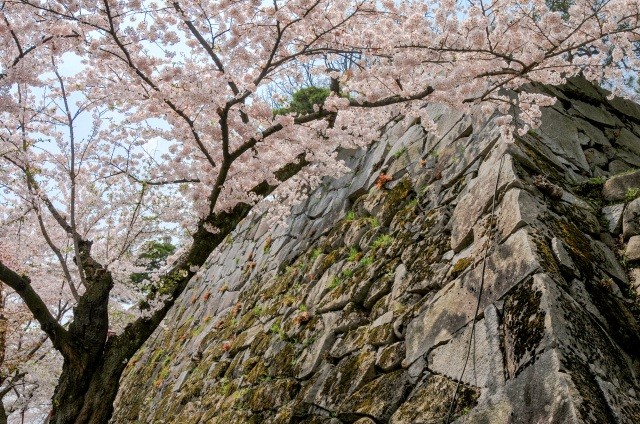
A 15-minute walk from Morioka station takes you to Morioka Castle, officially recognised as a national historic site and one of Japan’s top 100 castles.
When constructed in 1597 the castle was originally known as Kozukata Castle. It was the residence of the local feudal lords until 1874 when most of the buildings were demolished. Fortunately the stone walls remain in their original form and the castle grounds were preserved as a park in 1906.
Today the park is known as Morioka Castle Ruins Park and is a popular place for relaxation and recreation for locals. It is also recognised as one of Japan’s 100 best historical parks.
Many people come to the park during the springtime Sakura Festival. The view of cherry blossoms is enchanting when illuminated by paper lanterns at night. The park attracts visitors throughout the year with its seasonal beauty. Tsurugaike Pond is gracefully decorated with blooming wisteria trellises in May and hydrangeas in July. Scarlet maple leaves and vivid yellow gingko leaves are gorgeous in contrast with the castle’s stone walls in autumn. A large number of miniature snow huts create fascinating scenes when candlelit during Morioka Yukiakari Festival in winter.
The park is also home to monuments of some of the great names in literature including Takuboku Ishikawa, Kenji Miyazawa and Inazo Nitobe. Some of the works of each are inscribed on the monuments.
A thematic journey in the Tohoku region:Castles・SamuraiA thematic journey in the Tohoku region:Flowers
When constructed in 1597 the castle was originally known as Kozukata Castle. It was the residence of the local feudal lords until 1874 when most of the buildings were demolished. Fortunately the stone walls remain in their original form and the castle grounds were preserved as a park in 1906.
Today the park is known as Morioka Castle Ruins Park and is a popular place for relaxation and recreation for locals. It is also recognised as one of Japan’s 100 best historical parks.
Many people come to the park during the springtime Sakura Festival. The view of cherry blossoms is enchanting when illuminated by paper lanterns at night. The park attracts visitors throughout the year with its seasonal beauty. Tsurugaike Pond is gracefully decorated with blooming wisteria trellises in May and hydrangeas in July. Scarlet maple leaves and vivid yellow gingko leaves are gorgeous in contrast with the castle’s stone walls in autumn. A large number of miniature snow huts create fascinating scenes when candlelit during Morioka Yukiakari Festival in winter.
The park is also home to monuments of some of the great names in literature including Takuboku Ishikawa, Kenji Miyazawa and Inazo Nitobe. Some of the works of each are inscribed on the monuments.
A thematic journey in the Tohoku region:Castles・SamuraiA thematic journey in the Tohoku region:Flowers
Bank of Iwate Red Brick Building
Elegant red brick architecture that is a Morioka landmark
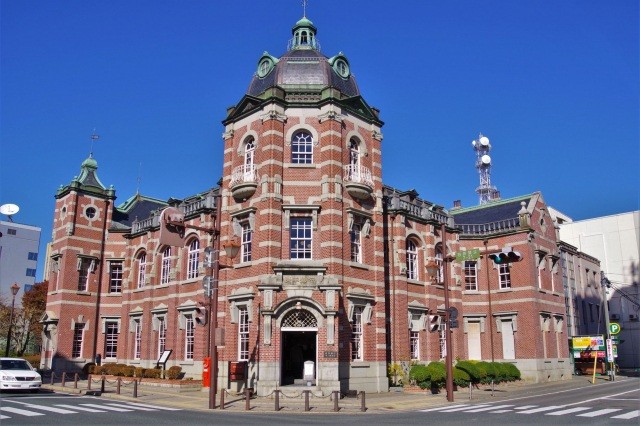
The Bank of Iwate Red Brick Building was built in 1911 as the head office for Morioka Bank. Designed by the Tatsuno-Kasai Architectural Design Office that designed Tokyo Station, this is the only architectural design by Kingo Tatsuno remaining in the Tohoku region. The building is designated as an Important Cultural Property. It is a dignified building with an elegant red brick face and a high ceiling that makes the inside feel open. It shows off the characteristic Western-style architecture of the time.
There are two zones in the building, the free Bank of Iwate zone and the paid admission Morioka Bank zone. The free zone features a multipurpose hall and a library lounge that introduces the history of Morioka's industry and commerce. The paid admission zone has a reception room and the vault used since the bank opened for business. There is also a corner that introduces the financial history of Iwate Prefecture and a theatre that shows the history and structure of the building in video.
There are two zones in the building, the free Bank of Iwate zone and the paid admission Morioka Bank zone. The free zone features a multipurpose hall and a library lounge that introduces the history of Morioka's industry and commerce. The paid admission zone has a reception room and the vault used since the bank opened for business. There is also a corner that introduces the financial history of Iwate Prefecture and a theatre that shows the history and structure of the building in video.
Morioka History and Culture Museum
Get to know all about Morioka in just 1 hour! Combine a visit to the museum to the ruins of Morioka Castle
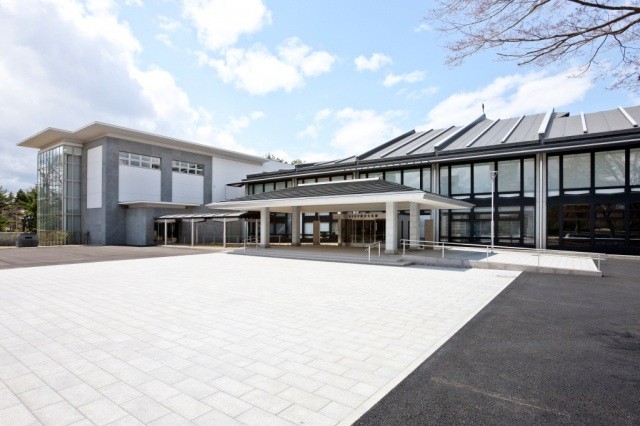
The distinctively designed building on the corner of Morioka Castle Ruins Park (Iwate Park) is the Morioka History and Culture Museum. The museum is an extension to the former Iwate Prefectural Library, designed by globally renowned architect Kiyonori Kikutake. This historic building is home to a wealth of information about Morioka’s culture. It’s a perfect spot to start if you’re a beginner when it comes to tourism in Morioka.
On the first floor you will find introductions to and sales of special Morioka products, and also lots of seasonal tourist information. There are models depicting the two major events of Iwate Prefecture, the Chagu Chagu Umakko Festival and Morioka Sansa Odori Festival, and the highlight is a 9m tall Dashi (festival float)! Why not take a photo or selfie with these impressive exhibits? On the second floor you will find exhibits relating to the history of the Morioka feudal domain and treasures of the Nanbu Clan.
There are also events and workshops that you can join on the day of your visit without a reservation, guaranteeing an interesting and interactive experience.
At the end of your visit try a cup of matcha green tea at Café Kozukata. The views over the castle ruins only enhance the delicious flavour of the matcha, making it a unique experience.
A thematic journey in the Tohoku region:Castles・Samurai
On the first floor you will find introductions to and sales of special Morioka products, and also lots of seasonal tourist information. There are models depicting the two major events of Iwate Prefecture, the Chagu Chagu Umakko Festival and Morioka Sansa Odori Festival, and the highlight is a 9m tall Dashi (festival float)! Why not take a photo or selfie with these impressive exhibits? On the second floor you will find exhibits relating to the history of the Morioka feudal domain and treasures of the Nanbu Clan.
There are also events and workshops that you can join on the day of your visit without a reservation, guaranteeing an interesting and interactive experience.
At the end of your visit try a cup of matcha green tea at Café Kozukata. The views over the castle ruins only enhance the delicious flavour of the matcha, making it a unique experience.
A thematic journey in the Tohoku region:Castles・Samurai
Morioka cold noodles (Korean style)
The noodles have an addictive firmness.
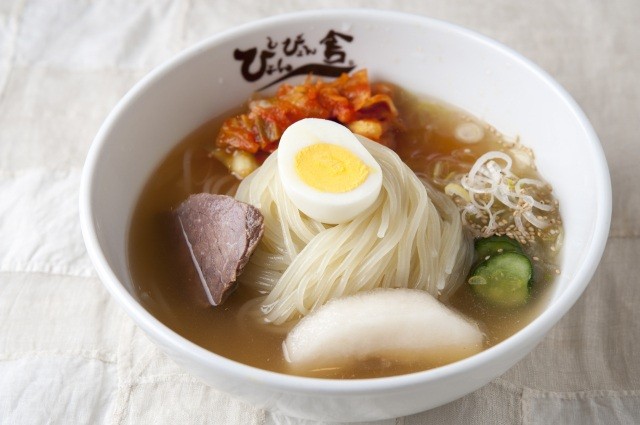
Morioka cold noodles were first made by a native of Pyongyang on the Korean Peninsula, who improved on the authentic taste. Morioka cold noodle is characterized by its firm translucent noodles made of wheat flour and potato starch, and many people are attracted by the unique flavor of the noodles with a firm texture, the rich soup made from beef bones, and the spiciness and sourness of kimchi. Those who do not like spicy food can adjust the spiciness by the amount of kimchi. At the "Pyonpyonsha Cold Noodle Factory" in Morioka Handmade Village, visitors can experience making cold noodles by hand.
Cold noodles are one of the three most popular noodles in Morioka (wankosoba, cold noodles, and jaja-men).
Cold noodles are one of the three most popular noodles in Morioka (wankosoba, cold noodles, and jaja-men).
Sakuragao Shuzo Co.,Ltd
Sake brewery in a rich natural setting, located east of Morioka City, at the foot of the Tatara mountain
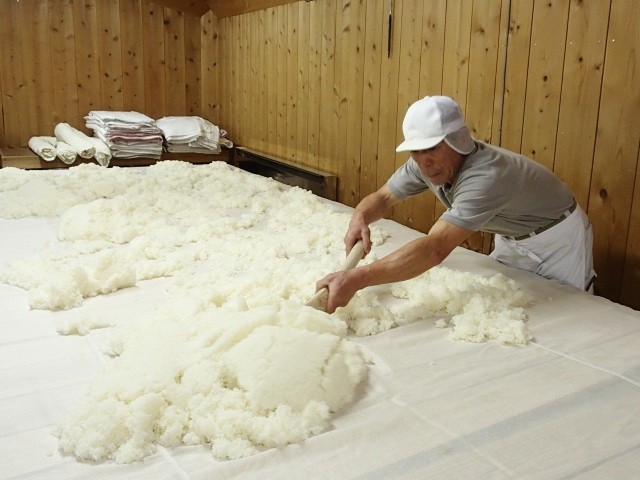
The company was founded in 1973 by merging sake breweries in the coastal areas of northern Iwate Prefecture. They mainly sell their products in Iwate Prefecture under the unified brand name of "Sakuragao."As far as sake brewing goes, they make uniquely local sake using rice produced in Iwate Prefecture, such as "Yuinoka", "Ginginga", and other areas.In recent years, they have been exporting sake to East and Southeast Asia, and the quantities have been increasing year by year. They also produce liqueurs made from locally-grown aronia and are certified as a Morioka City Umaimon Ambassador.
GOAL
